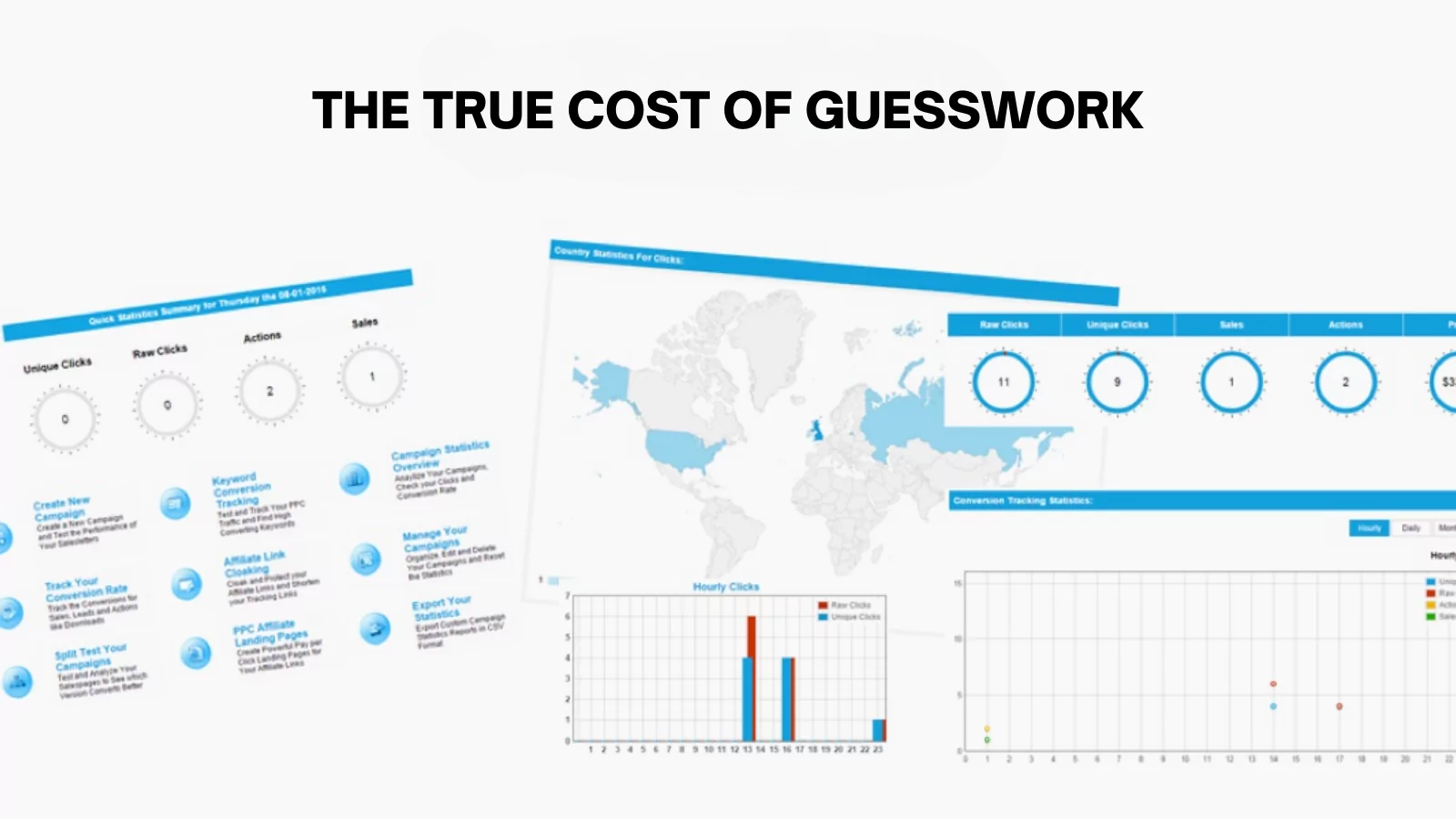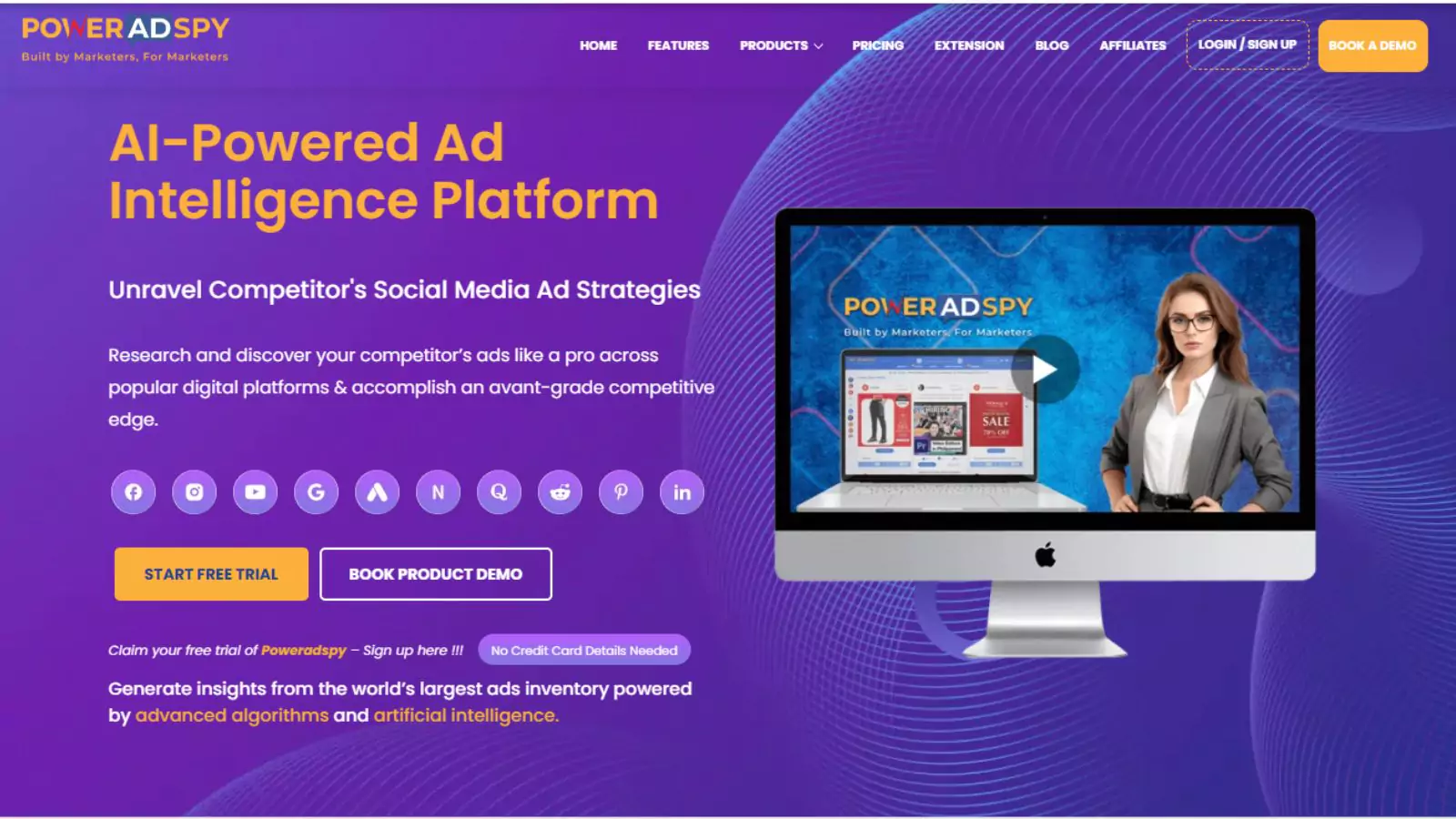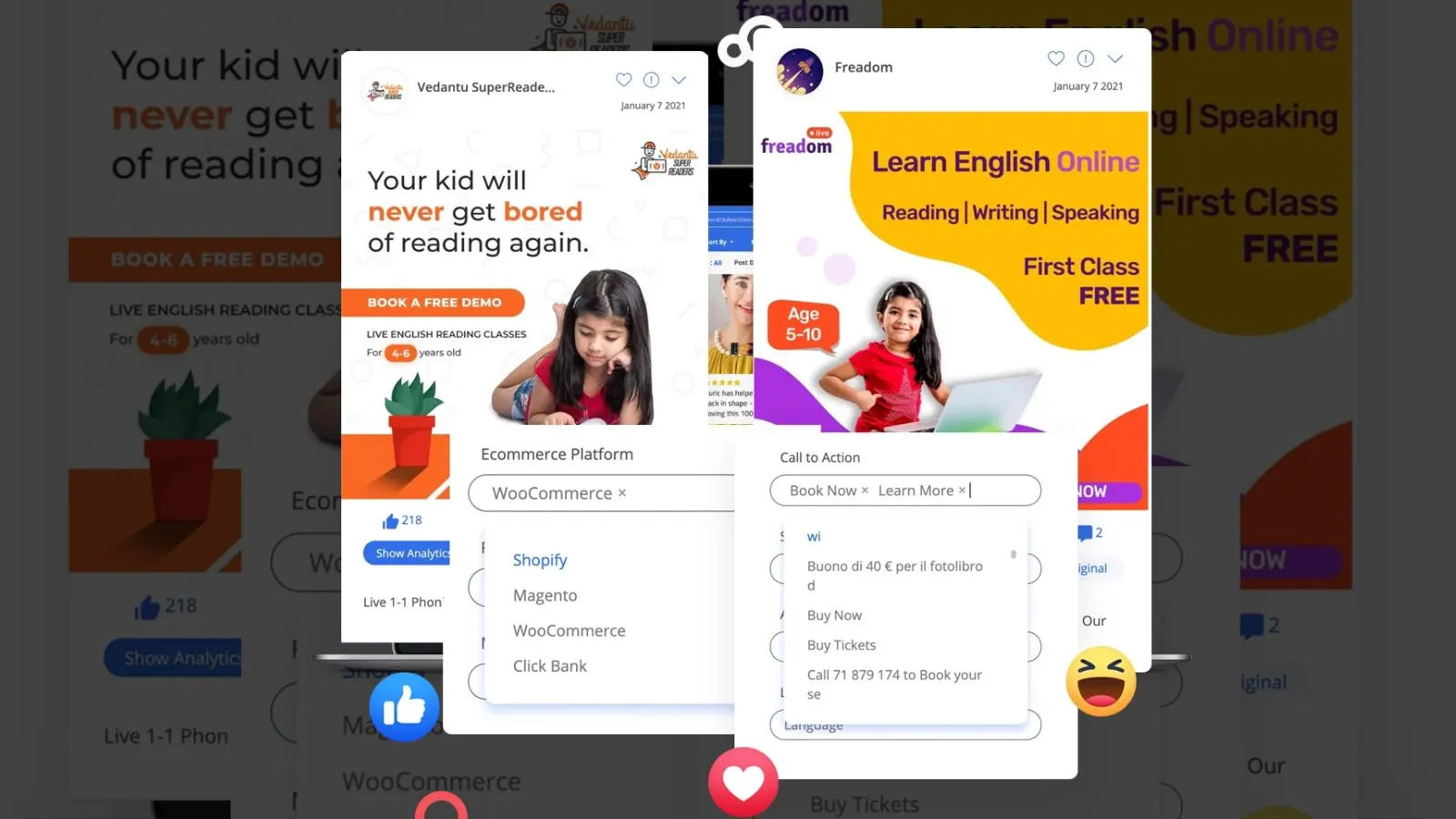Advertising Tracking Explained: How To Do It Effectively?
Running ads without data is like flying blind—you might guess where your audience is, but you’ll never be certain. That’s where effective advertising tracking steps in, illuminating every step of your campaign’s journey. From pinpointing which ad creative sparks the most engagement to understanding exactly where each click originates, advertising tracking provides the clarity you need to allocate your budget wisely and amplify your ROI.
In this post, we’ll walk you through three core tracking methods—UTM-tagged URLs, invisible pixels, and cookie-based retargeting—showing you exactly how to deploy each one for maximum impact. You’ll also discover platform-specific tactics for Facebook’s Meta pixel and Google Ads conversion tags, plus essential compliance tips for privacy regulations like GDPR and CCPA. By the end, you’ll have a comprehensive blueprint for transforming raw data into actionable insights.
Ready to stop relying on guesswork? Keep reading to learn how to set up your first tracking URL and unlock the true power of your ad spend.
In a hurry? Listen to the blog instead!
The True Cost Of Guesswork
 You’ve boosted posts on Facebook, tested keywords on Google, and launched trendy campaigns on TikTok. Still, every month ends with the same nagging question: “Which ads are working?” Impressions might look impressive, and clicks may seem promising, but neither tells you the full story. What truly matters is insight—real, actionable data that connects every click to a measurable outcome.
You’ve boosted posts on Facebook, tested keywords on Google, and launched trendy campaigns on TikTok. Still, every month ends with the same nagging question: “Which ads are working?” Impressions might look impressive, and clicks may seem promising, but neither tells you the full story. What truly matters is insight—real, actionable data that connects every click to a measurable outcome.
That’s where advertising tracking becomes indispensable. With the right systems in place, you don’t just monitor activity. You interpret it. You learn which audiences convert, which creatives fall flat, and which campaigns deserve your next dollar. It turns advertising from a guessing game into a performance-driven strategy.
In the sections ahead, we’ll break down what ad tracking means, why it’s a critical asset for modern marketers, and how to start using it to strengthen every stage of your campaign.
What Is Advertising Tracking?
Ad tracking is the process of gathering and analyzing data on how users interact with your ads across different platforms. It goes beyond just counting views or clicks. It involves analyzing key performance metrics. These metrics include impressions, engagement, conversions, bounce rates, time on page, and cost per result. These insights help you understand if someone saw your ad & whether they took the action you wanted.
It is done using tools like tagged URLs, tracking pixels, and browser cookies. Each method gives you a different layer of information, helping you map the full journey from ad view to final conversion. With consistent advertising tracking, you can identify which creatives, messages, and channels are influencing customer behavior.
Instead of relying on hunches, marketers use advertising tracking to answer specific questions like “Which offer converted best?” or “Which platform delivered the lowest cost per lead?”
Why Advertising Tracking Is Non‑Negotiable?
![]() Without detailed insight, you essentially pour money down a black hole. Imagine shifting spend from underperforming ads to winners in real time—cutting waste and doubling down on what works. That’s the power of data. Smart advertisers treat ad tracking as a compass: it points you to top‑performing audiences, uncovers underused channels, and surfaces creative tweaks before they become costly mistakes.
Without detailed insight, you essentially pour money down a black hole. Imagine shifting spend from underperforming ads to winners in real time—cutting waste and doubling down on what works. That’s the power of data. Smart advertisers treat ad tracking as a compass: it points you to top‑performing audiences, uncovers underused channels, and surfaces creative tweaks before they become costly mistakes.
Furthermore, as privacy rules tighten (GDPR, CCPA), capturing consented data through first‑party methods ensures you stay compliant and maintain customer trust. When you embrace advertising tracking, you protect budgets & safeguard brand reputation.
Popular Methods Used For Advertising Tracking
![]() Effective advertising tracking isn’t just about monitoring numbers — it’s about building a data-driven framework that enhances your advertising research and drives smarter campaign decisions. Whether you’re testing creatives, evaluating audience segments, or exploring new channels, these tracking methods are the backbone of market research for advertising. Let’s explore three widely used approaches that can help you refine your strategy and improve your return on ad spend.
Effective advertising tracking isn’t just about monitoring numbers — it’s about building a data-driven framework that enhances your advertising research and drives smarter campaign decisions. Whether you’re testing creatives, evaluating audience segments, or exploring new channels, these tracking methods are the backbone of market research for advertising. Let’s explore three widely used approaches that can help you refine your strategy and improve your return on ad spend.
1) Tracking URLs With UTM Parameters
One of the most reliable tools in market research and advertising is the use of UTM-tagged URLs. UTM (Urchin Tracking Module) parameters are custom tags added to the end of your destination URLs. These tags allow analytics platforms like Google Analytics to identify exactly where your traffic is coming from — down to the campaign, source, and medium.
For example, if you’re running a Facebook ad for a summer sale, a properly tagged UTM link will tell you whether traffic came from that ad, which version they clicked on, and how they behaved afterward. It’s a precision tool that’s especially useful across email campaigns, influencer partnerships, PPC ads, and affiliate programs.
When used consistently, UTM parameters provide clarity in your ad tracking by helping you compare campaign performance across multiple platforms. They allow you to pinpoint which creatives, audiences, and offers are delivering the most conversions. This means no more assumptions — only clear, data-backed decisions.
2) Tracking Pixels
While UTM links help track user actions post-click, tracking pixels focus on what happens before the click. A tracking pixel is a tiny 1×1 image — usually transparent — embedded within your ad, email, or landing page. When that pixel loads, it sends a signal to your analytics platform confirming the asset was viewed.
It is especially valuable in measuring ad impressions. For instance, if your ad is displayed 10,000 times but only gets 300 clicks, a tracking pixel helps uncover the gap between exposure and engagement. This could highlight issues with creative fatigue, audience misalignment, or platform underperformance.
In the context of advertising research, tracking pixels offer a way to measure brand reach and message visibility. They provide engagement metrics that go beyond clicks and give you an early look into campaign performance. By integrating this data into your market research for advertising, you can adjust elements like copy, visuals, and targeting to improve effectiveness.
3) Cookies and Retargeting
Cookies are small files stored in a user’s browser that track behavior such as pages viewed, session duration, and even items added to a shopping cart. When used ethically and with consent, cookies allow advertisers to follow up with relevant ads — also known as retargeting.
This method of ad tracking enables brands to re-engage users who have already interacted with them, increasing the likelihood of conversion. For example, if someone visited your product page but didn’t purchase, a cookie can help serve them a follow-up ad reminding them of the item, perhaps with an added discount.
As privacy regulations like GDPR and CCPA evolve, the focus has shifted to first-party cookies — those set by your domain — which are considered more secure and transparent. By combining cookie-based behavior tracking with CRM data or email activity, advertisers can build hyper-targeted audiences, avoid redundancies (like targeting existing customers), and serve more relevant content.
When it comes to market research and advertising, cookies offer a bridge between user behavior and tailored messaging, helping you craft experiences that feel timely and personal rather than intrusive.
Advertising Tracking On Major Platforms
![]() Each advertising platform comes with its ecosystem, and understanding how they track data is key to improving your campaign performance. The two giants, Facebook (Meta) and Google, offer some of the most advanced tools for advertising tracking, giving marketers the ability to follow user actions from impression to conversion with incredible detail. Here’s how each platform handles tracking, and what it means for your overall advertising research.
Each advertising platform comes with its ecosystem, and understanding how they track data is key to improving your campaign performance. The two giants, Facebook (Meta) and Google, offer some of the most advanced tools for advertising tracking, giving marketers the ability to follow user actions from impression to conversion with incredible detail. Here’s how each platform handles tracking, and what it means for your overall advertising research.
1) Facebook (Meta)
Facebook, now operating under the Meta brand, provides a powerful tracking tool known as the Meta Pixel. This small snippet of code, once installed on your website, tracks user actions like newsletter sign-ups, purchases, and page views. It feeds that data back into Facebook Ads Manager, giving you a complete view of your campaign’s performance.
More than just a tracker, the Meta Pixel enables dynamic ad delivery. This means it automatically optimizes your ads to show to users most likely to take your desired action—whether that’s clicking a link, watching a video, or completing a purchase. Layer in UTM parameters, and you can align your Facebook campaign data directly with tools like Google Analytics for even deeper market research and advertising analysis.
In short, Facebook makes advertising tracking not only efficient but also intelligent. It provides granular insights that help you adjust your campaigns in real-time, improving both audience targeting and ad spend efficiency.
2) Google Ads
Google Ads brings its suite of tracking tools, focused on user behavior across search, display, YouTube, and mobile. You can set up conversion tracking for actions like form submissions, purchases, app installs, phone calls, and even map interactions. When connected with Google Analytics, this data becomes a goldmine for understanding how users interact with your brand post-click.
With Chrome moving away from third-party cookies, Google is pushing advertisers toward first-party tracking solutions that prioritize privacy without compromising accuracy. Tags and IDs generated by Google’s tracking setup provide reliable insights into metrics such as bounce rate, session length, and transaction value.
In the context of market research for advertising, Google Ads provides unmatched visibility. From search queries to user demographics, you gain the intelligence needed to refine your targeting, improve ad copy, and track the full customer journey from ad impression to purchase.
Read More:
7 Popular Types of Advertisements To Help You Reach Your Audience
Struggling With Ad Research?
Finding effective ad strategies shouldn’t feel like guesswork. Yet for many marketers, the research process becomes time-consuming, frustrating, and often unreliable without the right tools.
Common Challenges Marketers Face
Here are the common challenges that marketers face:
Overwhelmed by irrelevant ads
Spending hours sorting through low-performing or unrelated ads can blur your focus and slow down decision-making.
Lack of winning creative insights
It’s not enough to just see what competitors are running—you need to know why their ads convert. Without a clear context, you’re left guessing which elements work.
Outdated or limited ad data
Relying on tools that don’t update regularly means you could be basing your strategy on outdated content that no longer performs.
No view into full funnels
Seeing an ad without access to its landing page or sales funnel limits your understanding of the complete user journey.
Clunky, time-consuming interfaces
If your ad intelligence platform is difficult to navigate or lacks efficient filters, valuable research time is wasted.
Let Your Research Work Smarter
Whether you’re a brand manager, media buyer, or agency lead, using smarter ad research tools can give you a strategic edge. With platforms like PowerAdSpy, you get access to real-time advertising tracking, competitor funnels, and performance filters—all designed to make your ad research faster, clearer, and more actionable.
Why Choose PowerAdSpy For Advertising Tracking?
 If you’re serious about improving your ad performance and staying ahead of the competition, the right tools make all the difference. So why choose PowerAdSpy? Because it brings together advanced advertising tracking and deep competitive insights in one platform—helping you make smarter decisions, faster.
If you’re serious about improving your ad performance and staying ahead of the competition, the right tools make all the difference. So why choose PowerAdSpy? Because it brings together advanced advertising tracking and deep competitive insights in one platform—helping you make smarter decisions, faster.
Key Features of PowerAdSpy:
Competitor Analysis
 Track ads across top platforms like Facebook, Instagram, YouTube, Twitter, and LinkedIn. Analyze creatives, placements, and engagement metrics to stay one step ahead of your competition.
Track ads across top platforms like Facebook, Instagram, YouTube, Twitter, and LinkedIn. Analyze creatives, placements, and engagement metrics to stay one step ahead of your competition.
Ad Spend Insights
Filter ads by estimated budget to understand how much your competitors are investing. Use this insight to allocate your ad spend more effectively.
High-Performing Ad Discovery
Quickly identify winning ads in your niche based on performance. Understand what formats, messaging, and visuals resonate with your audience.
Advanced AI-Based Filters
Find ads using AI-powered filters that search by text, objects, celebrities, and more—so your results are always relevant and refined.
Massive Ad Repository
 Access a global database of over 500 million ads from 100+ countries, giving you one of the most extensive ad libraries available.
Access a global database of over 500 million ads from 100+ countries, giving you one of the most extensive ad libraries available.
Ad Position & Metrics Search
Search and sort ads by placement, country, impressions, format, and popularity to identify what’s performing best across various segments.
Better Targeting Strategies
PowerAdSpy lets you analyze audience engagement and demographics so you can fine-tune your targeting and increase conversion rates.
With powerful advertising tracking capabilities and a user-friendly interface, PowerAdSpy helps you cut through the noise, reduce wasted spend, and build campaigns that convert.
Five Actionable Tips To Improve Advertising Tracking
![]() Effective ad tracking doesn’t happen by accident—it’s the result of intentional setup and disciplined habits. Here are five practical tips that can significantly improve how you track, analyze, and optimize your ad performance.
Effective ad tracking doesn’t happen by accident—it’s the result of intentional setup and disciplined habits. Here are five practical tips that can significantly improve how you track, analyze, and optimize your ad performance.
1. Tag Every Link Automatically
One of the simplest yet most powerful steps you can take is to ensure every campaign link is tagged with UTM parameters. Whether it’s a paid ad, a social media post, or a promotional email, automated link tagging ensures consistent advertising tracking. It saves hours during reporting and lets you evaluate performance across channels with ease.
2. Tight Pixel Placement
Accuracy in tracking starts with proper placement. Install tracking pixels on every essential page—checkout confirmations, thank-you pages, lead magnet downloads, and more. Use browser extensions or debugging tools to verify that each pixel fires correctly. This improves the precision of your ad-tracking data and helps you avoid missed conversions.
3. Segment by Audience
Don’t treat all traffic the same. Use your analytics platform to segment users by source—paid, organic, referral, and direct. Create custom dimensions for ad campaigns to isolate their impact. Audience segmentation reveals hidden insights and helps you refine your targeting based on real ad tracking performance.
4. Monitor Creative Fatigue
Combine creative metrics with your ad tracking to identify when it’s time to refresh your ad visuals or messaging. Rising cost-per-click (CPC) or declining click-through rates (CTR) often indicate audience fatigue. Regular monitoring helps you stay ahead of performance drops and keep your ads engaging.
5. Review Dashboards Daily
Advertising tracking tools are only useful if you use them consistently. Make it a habit to review your dashboards daily. Set up performance thresholds and automated alerts to catch anomalies—like a sudden drop in impressions or spike in bounce rates—before they impact your results.
By weaving these best practices into your daily workflow, you’ll elevate your ability to track campaign success, troubleshoot issues quickly, and improve the ROI of every advertising effort.
Conclusion
Success in advertising no longer depends on guesswork—it depends on clarity. With accurate advertising tracking, you gain the visibility needed to understand what’s working, what isn’t, and why. From tagging links with UTM parameters to using tracking pixels and cookies, each method gives you a piece of the bigger picture. When combined with platform-specific tools like the Meta Pixel and Google Ads conversion tracking, you gain a complete view of the customer journey—from the first impression to the final click.
And suppose you’re ready to take that insight even further. In that case, platforms like PowerAdSpy make it easier to monitor competitor strategies, study high-performing ads, and apply those learnings to your campaigns. Better tracking leads to better decisions—and better decisions lead to stronger results.
Start treating your ad data as a roadmap, not just a report. Make every click count, optimize with intent, and let advertising tracking drive real, measurable growth.
FAQs
- How do I choose the right advertising tracking tools for my business?
Start by evaluating your campaign goals, platforms, and budget. If you’re running ads across multiple channels, choose tools that offer cross-platform tracking and real-time analytics. Look for features like pixel support, UTM automation, and integration with platforms like Google Analytics or Facebook Ads Manager. Tools like PowerAdSpy can offer competitive insights alongside traditional tracking features.
- Can advertising tracking help improve A/B testing results?
Yes. Ad tracking plays a key role in A/B testing by clearly showing which version of your ad, landing page, or CTA performs better. It allows you to compare user interactions, conversion rates, and cost-efficiency, so you can make data-backed decisions faster.
- How often should I audit my ad tracking setup?
Ideally, conduct a tracking audit once a quarter or whenever you launch new campaigns. Make sure pixels are firing correctly, UTM parameters are consistent, and your analytics goals align with your current business objectives.
- What’s the difference between first-party and third-party tracking?
First-party tracking involves data collected directly through your website or domain (like your own cookies or analytics scripts). Third-party tracking collects data from external sources, like ad networks or cross-site cookies. Due to increasing privacy regulations, businesses are shifting more toward first-party tracking for reliability and compliance.
- How do I measure the long-term impact of advertising campaigns with tracking?
Beyond immediate conversions, use tracking to monitor repeat visits, customer lifetime value, and assisted conversions. Tools like attribution modeling in Google Analytics can help you understand how various touchpoints contribute to eventual sales—giving you insight into your ads’ long-term influence.





